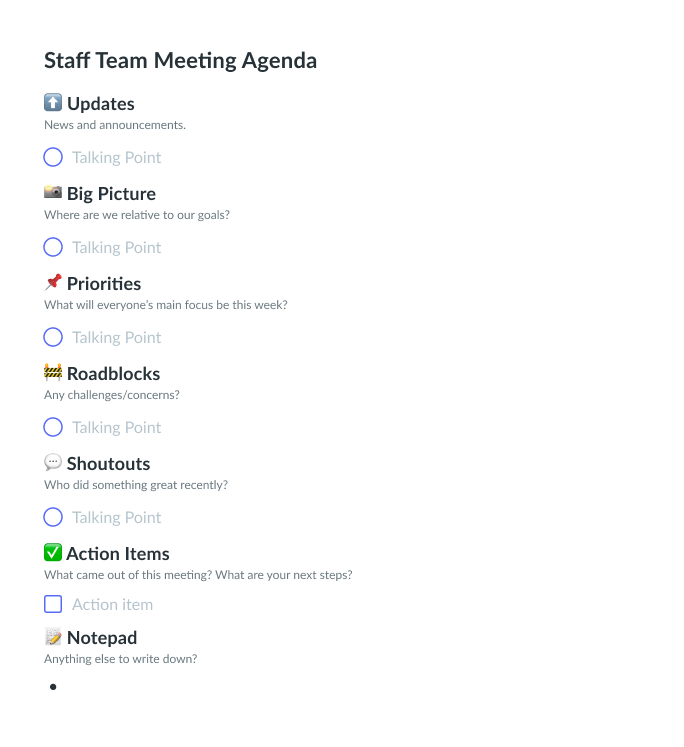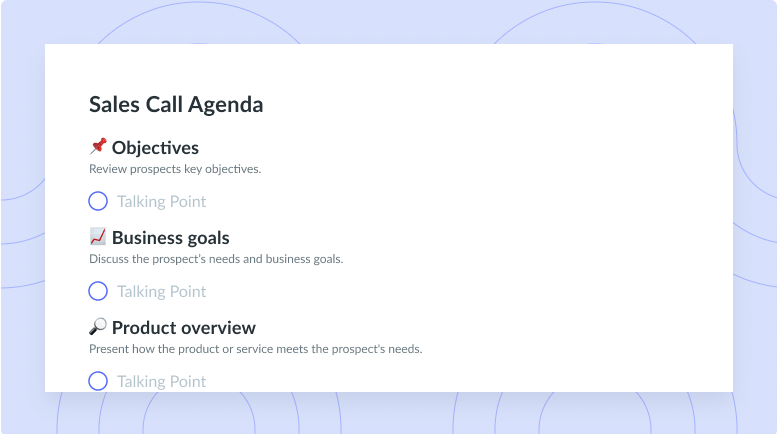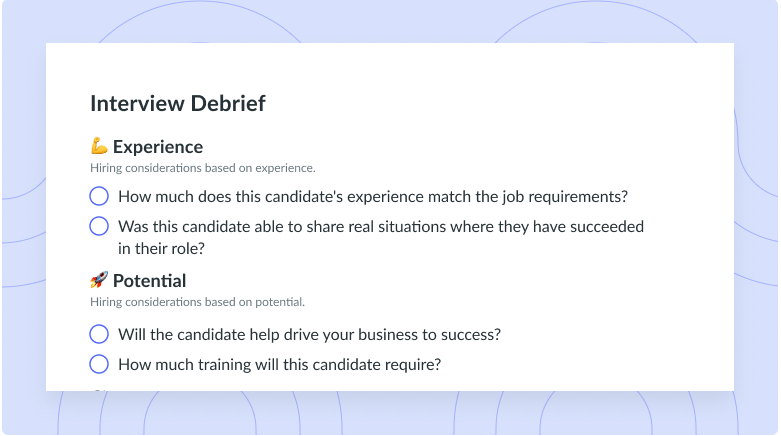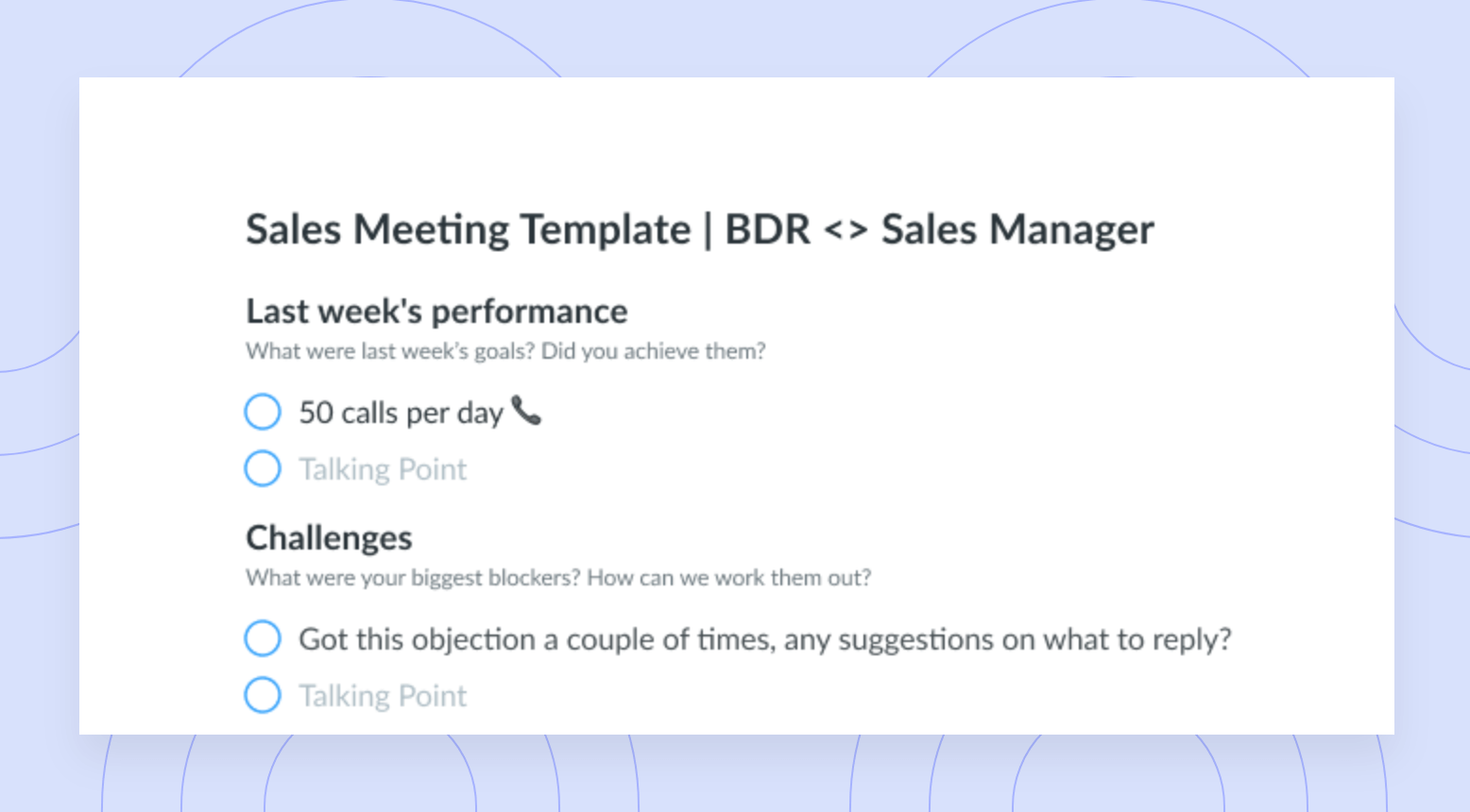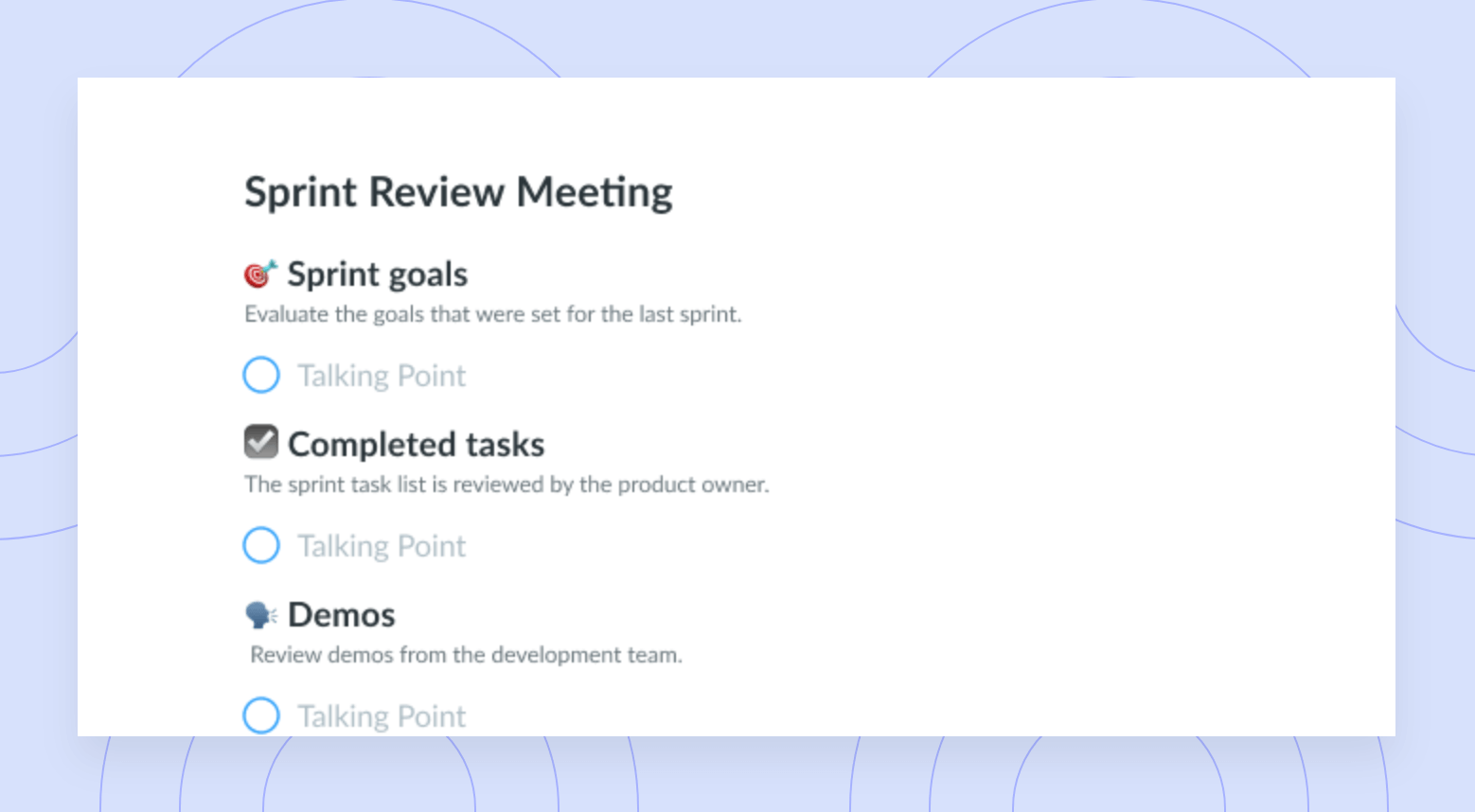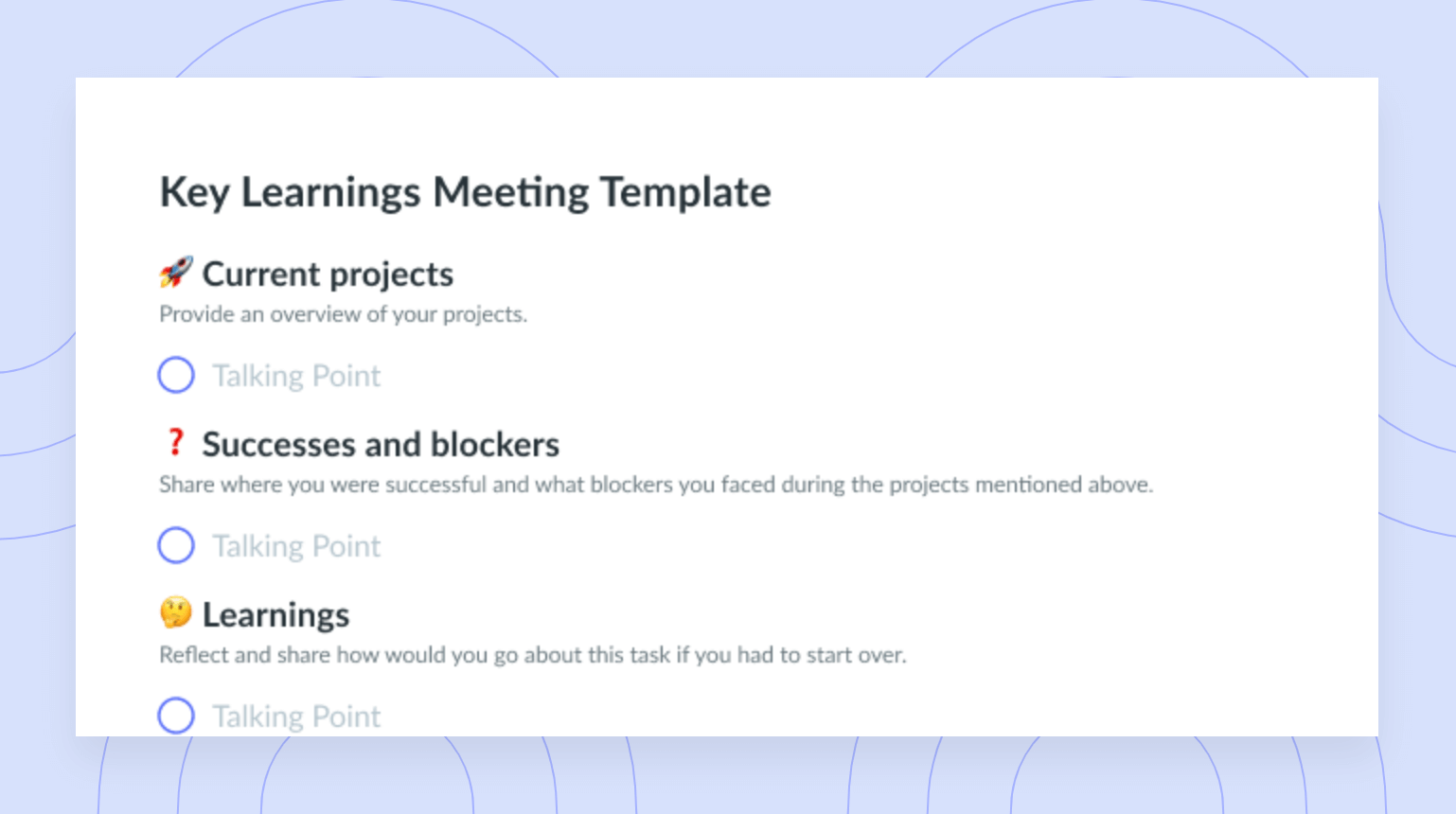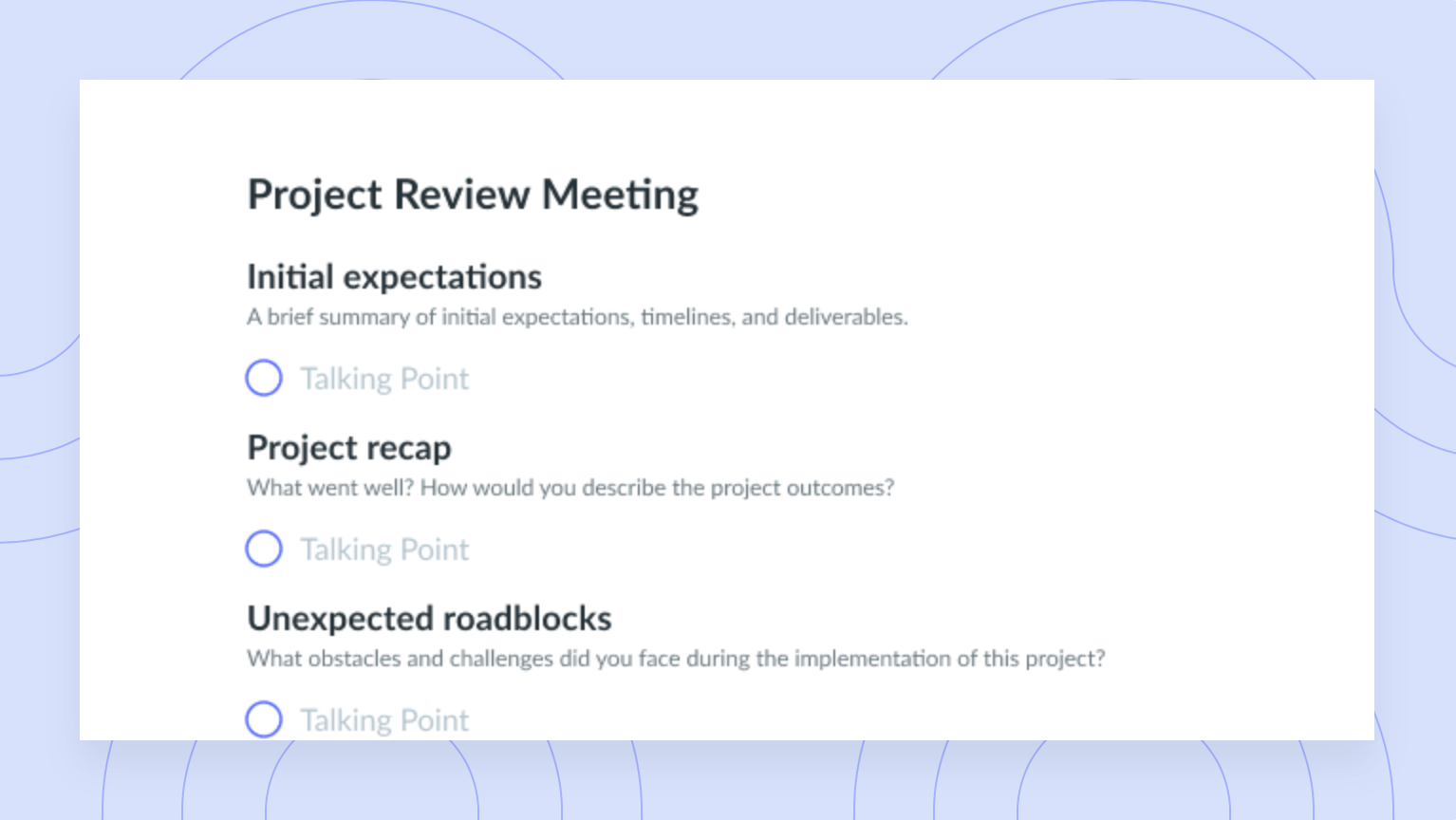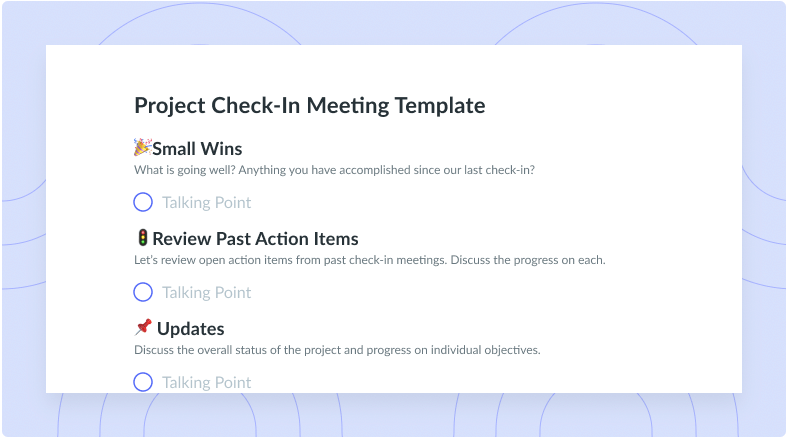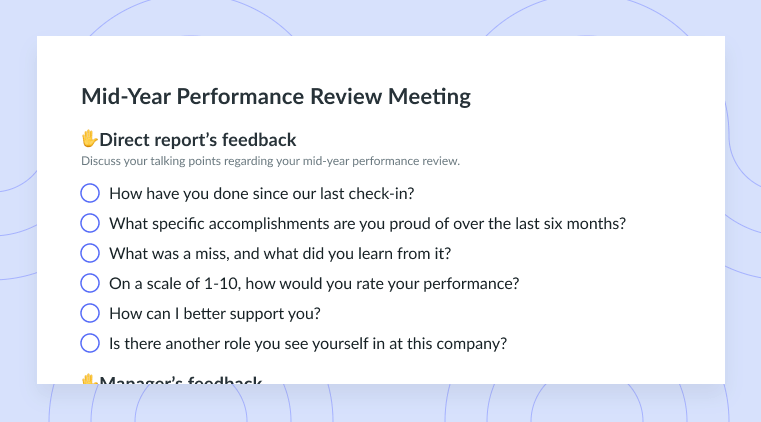
Staff Team Meeting Agenda
Get this templateUse this Staff Team Meeting Agenda template to keep your team focused, on track, organized and moving in the same direction.


Staff Team Meeting Agenda
A great staff meeting is an opportunity for colleagues and managers to get together to promote teamwork and collaboration. They are an effective tool for businesses needing to make company-wide announcements, share information, and build cohesion within their staff.
Not all staff team meetings are created equal.
An effective, engaging staff team meeting needs to have a clearly defined agenda, a time limit, a moderator, and be a regular part of the schedule for it to be of value.
What is a Staff Team Meeting Agenda?
A detailed agenda is the bedrock on which a successful staff team meeting is built. This document communicates the time, place, scope, and discussion topics to the attendees required at the meeting.
This agenda should always be supplied to the relevant people ahead of time. This gives people space to prepare adequately for the meeting and have their talking points ready.
An agenda can often be an afterthought, but this is a mistake.
Taking the time to build a staff meeting agenda template that works well is an often-overlooked way to immediately improve meeting quality and save time.
How to Run an Effective Staff Team Meeting Agenda
Each meeting we have is a valuable opportunity to collaborate with our colleagues. Getting the best out of these meetings is simple if we have a solid, detailed agenda and use a few easy-to-implement best practices.
- Have an agenda template – Every meeting has different priorities and outcomes attached to it. The agenda should be clearly defined, easy to understand, and relevant to the meeting attendees.
- Everyone must contribute – Asking for input from each attendee is a thoughtful, engaging strategy to get maximum value from a meeting. Doing this well in advance of the meeting gives people time to consider their contributions and to make them without fear.
- Communicate purpose – Every meeting you have must include a clear, well-defined purpose.
- Clear Agenda – The agenda should be easy to understand and use language the attendees can relate to. Try to avoid confusing jargon or narrowly specific terms.
- Time management – Each agenda item should be assigned a time limit for discussion.
- Take minutes – Accurate meeting notes will allow for the attendees to reflect on the meeting after it concludes and follow up more effectively on the actions decided at the meeting.
- Always end with next steps – Leaving space at the end of the meeting to recap the action items is the best way to retain focus and reflect on what needs to happen next.
What’s inside this Staff Team Meeting Agenda:
1⬆️ Updates
News and announcements.
Open channels of communication are vital to the success of a business. Providing regular status updates in a staff team meeting allows the attendees to unite around their shared goals. They are most effective when there is a contribution from both the person giving the update and those receiving it.
2📸 Big Picture
Where are we relative to our goals?
Helping people to understand the big picture avoids one of the most frustrating parts of managing a team – having siloed employees who don’t understand how the work they do impacts their colleagues in other parts of the business. Effectively communicating a detailed overview as part of the meeting agenda helps people align their work with the overall company objectives.
3📌 Priorities
What will everyone’s main focus be this week?
A meeting should always have a clear purpose. Accurately defining the meeting priorities will ensure that the meeting is not derailed by anything irrelevant. Agenda items should be classified according to their importance and urgency. Something that is important but doesn’t need to be handled immediately will have less priority than an item that has both importance and a time constraint.
4🚧 Roadblocks
Any challenges/concerns?
A meeting should always have a clear purpose. Accurately defining the meeting priorities will ensure that the meeting is not derailed by anything irrelevant. Agenda items should be classified according to their importance and urgency. Something that is important but doesn’t need to be handled immediately will have less priority than an item that has both importance and a time constraint.
5💬 Shoutouts
Who did something great recently?
Employee recognition should be a top priority of a great manager. One of the most effective ways to make people feel their worth is appreciated is by having the week’s shoutouts written into the agenda. When employees know their hard work is being noticed they will be more effective, satisfied, and encouraged.
6✅ Action Items
What came out of this meeting? What are your next steps?These are often discussed and created during the meeting. It’s important to take time at the end of the meeting to understand what needs to be done next and who needs to do it. If the action items are not properly recorded, then they will never be measured. An action item that cannot be followed up is not useful and may require an additional, wasteful meeting to re-define clearly.
7📝 Notepad
Anything else to write down?



